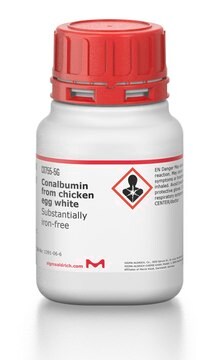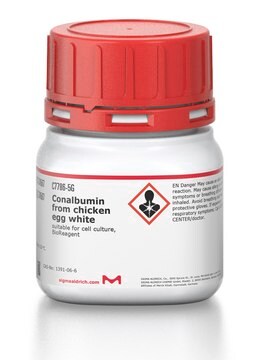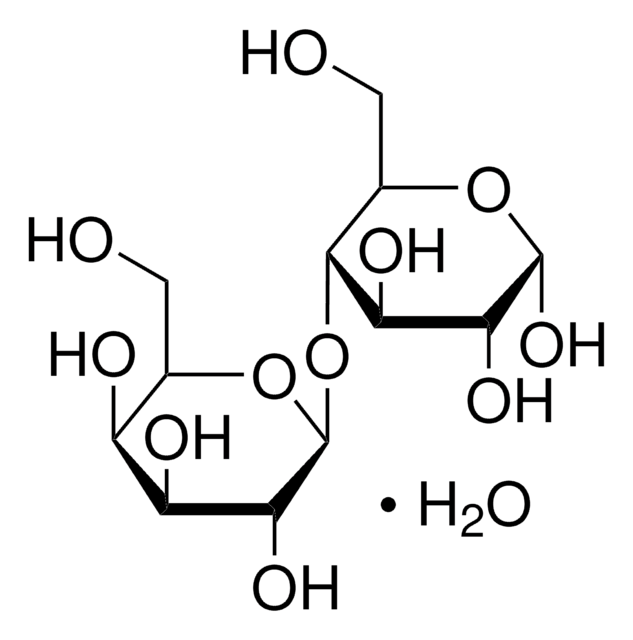G0625
D-(+)-Galactose
≥98% (HPLC)
Sinônimo(s):
Galactose
About This Item
Produtos recomendados
fonte biológica
bovine (Ruminant- Cow, Ox, Buffalo)
Nível de qualidade
Ensaio
≥98% (HPLC)
forma
powder
técnica(s)
HPLC: suitable
cell based assay: suitable
cor
white to off-white
faixa de pH útil
5.0-7 (25 °C, 180 g/L)
pf
168-170 °C (lit.)
solubilidade
water: 180 g/L at 20 °C (68 °F )
aplicação(ões)
cell analysis
genomic analysis
life science and biopharma
temperatura de armazenamento
room temp
cadeia de caracteres SMILES
OC[C@@H](O)[C@H](O)[C@H](O)[C@@H](O)C=O
InChI
1S/C6H12O6/c7-1-3(9)5(11)6(12)4(10)2-8/h1,3-6,8-12H,2H2/t3-,4+,5+,6-/m0/s1
chave InChI
GZCGUPFRVQAUEE-KCDKBNATSA-N
Procurando produtos similares? Visita Guia de comparação de produtos
Descrição geral
Furthermore, galactose is a fundamental component of the disaccharide lactose and is released through hydrolysis by β-galactosidase enzymes, playing a vital role in the survival and virulence of bacteria. In Escherichia coli, galactose is utilized through the Leloir pathway, with β-d-galactose serving as a carbon source and β-d-galactose inducing UDP-galactose synthesis for biosynthetic glycosylation. Galactose finds applications in researching metabolic disorders like galactosemia and serves as a substrate for enzymes involved in galactose catabolism, making it a valuable component in galactosyltransferase labeling buffer and a supplement in MRS broth for the growth of thermophilic lactobacilli.
Aplicação
- as a supplement in SGal media to grow yeast strains to examine the role of different Ssa heat-shock proteins (Hsp70) isoforms in Hsp90 chaperoning functions
- as a carbon source in Biolog (MT2) microplate assay to test the ability of isolates to utilize carbon substrates
- to induce expression of membrane protein-green fluorescent protein (GFP) fusion in yeast
Ações bioquímicas/fisiológicas
Características e benefícios
- Ideal for Metabolomics, Biochemical and Cell Biology research
- Versatile and adaptable for wide variety of laboratory and research applications
Outras notas
Código de classe de armazenamento
11 - Combustible Solids
Classe de risco de água (WGK)
WGK 3
Ponto de fulgor (°F)
Not applicable
Ponto de fulgor (°C)
Not applicable
Equipamento de proteção individual
Eyeshields, Gloves, type N95 (US)
Escolha uma das versões mais recentes:
Já possui este produto?
Encontre a documentação dos produtos que você adquiriu recentemente na biblioteca de documentos.
Os clientes também visualizaram
Nossa equipe de cientistas tem experiência em todas as áreas de pesquisa, incluindo Life Sciences, ciência de materiais, síntese química, cromatografia, química analítica e muitas outras.
Entre em contato com a assistência técnica







